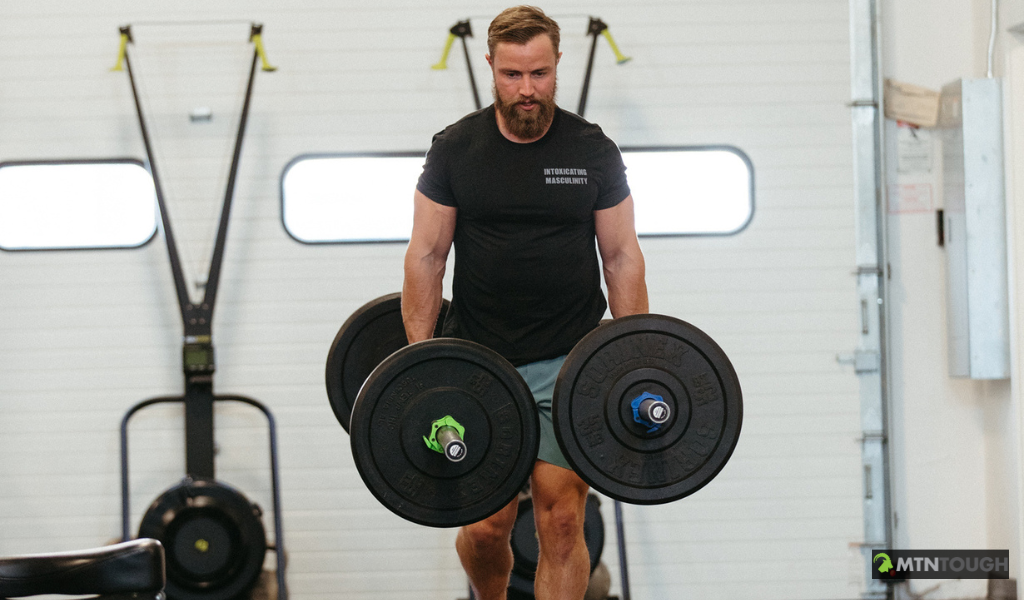Overload is the act of exercising a muscle to fatigue for superior strength gains. Explore the principles, benefits, and techniques for effective overload training. Overload in exercise means challenging a muscle until it reaches fatigue. This method is key for effective strength training.
Building muscle strength and endurance requires pushing the body beyond its comfort zone, a concept known as muscular overload. Engaging in this practice forces the muscle fibers to adapt, leading to improvements in muscle size and endurance. By progressively increasing the resistance or intensity of a workout, individuals can ensure that their muscles don’t plateau and continue to gain strength.
This technique is widely incorporated into various training programs, from weightlifting to bodyweight exercises, to promote optimal muscle growth and performance. As muscles repair from the micro-damage caused by overload, they grow stronger, underscoring the importance of rest and recovery in any exercise regimen. For anyone aiming to enhance their physical fitness, understanding and applying the principle of overload is crucial.
Muscle Overload Fundamentals
Muscle Overload is a cornerstone of strength training, it’s what happens when you push your muscles to do more than they’re accustomed to. Strength increases follow, as your body adapts to these new demands. To effectively harness the power of muscle overload, understanding the essentials is key.
What Is Muscle Overload?
Muscle overload isn’t about lifting the heaviest weights on your first try; it’s about gradual progression. The idea is to increase weight, frequency, or repetition rate over time. This strategy challenges your muscles and sparks adaptations that lead to greater strength and endurance. Start small, be consistent, and watch as you unlock new levels of fitness.
The Science Behind Muscle Fatigue
Muscle fatigue isn’t just a feeling; it’s a complex biochemical process. When you exercise, muscle fibers tear on a microscopic level, signaling the body to repair and fortify. Fatigue is the momentary limit of your muscle’s capabilities, but it’s also the start of the strengthening process.
During overload, our body utilizes energy stored in muscles, which gets depleted, causing fatigue. This healthy stress leads to muscle growth during recovery. Rest is crucial, as it allows these adaptations to unfold, resulting in stronger, more adept muscles.

Significance Of Training To Failure
The ‘Significance of Training to Failure’ is a hot topic among gym enthusiasts. It’s a method where you push your muscles to their limits. To do this, you keep lifting a weight until you can’t do it anymore. This is also called ‘training to failure’. Some believe this way of training gives the best muscle growth. Yet, it’s essential to understand what happens when muscles get very tired.
Advantages Of Reaching Muscle Fatigue
Let’s explore why pushing muscles until they can’t work anymore is good:
- Improves Strength: Working out this way can make muscles stronger.
- Boosts Muscle Size: Muscles grow when tired out completely.
- Increases Endurance: It also helps you do activities longer.
Effective muscle tear and repair are vital for growth. It happens best when you train to failure. This type of exercise can trigger more growth hormones in the body.
Common Myths Dispelled
Many people have wrong ideas about this training. Let’s clear them up.
| Myth | Truth |
|---|---|
| Always Train to Failure | Not necessary every session. It can be overtraining. |
| It’s Unsafe | Safe if done right. Learn proper form and use a spotter. |
| Only for Pros | Good for all levels with right guidance and approach. |
Remember, training to failure has its place. But it must be part of a well-planned routine.
Types Of Overload Techniques
Embarking on the path to muscular growth, one must embrace the concept of muscle overload. This powerful principle requires challenging muscles beyond their comfort zone. The aim here is simple yet profound — push muscles to adapt, grow, and gain strength. Explore various overload techniques to optimize fitness growth and vitality.
Progressive Overload Explained
Progressive overload stands as a cornerstone in the realm of fitness and bodybuilding. It entails escalating the weight, frequency, or rep count in your exercises gradually. This method ensures consistent muscle challenge, pivotal for driving growth. Spotlight key elements:
- Increase weight incrementally
- Enhance frequency methodically
- Boost repetitions responsibly
Implementing these tactics steadily paves the way to impeccable strength gains.
Drop Sets And Their Effectiveness
Drop sets, a dynamic overload technique, maximize muscle fatigue to unlock new growth territories. The process is straightforward. Perform an exercise to failure, reduce the weight, and continue without rest. Witness the impact of drop sets:
- Immediate muscle exhaustion
- Rapid strength enhancement
- Boosted muscular endurance
By exploiting the full potential of muscle fibers, drop sets deliver unmatched effectiveness in workout regimens.
Balancing Intensity And Volume
Balancing intensity and volume in workouts is crucial for muscle gain without injury. To achieve fitness goals, one must understand the right way to exercise a muscle to fatigue. Intensity refers to how hard muscles work during an activity. Volume, on the other hand, is the total amount of exercise, measured in sets and reps. Getting the balance right leads to optimal strength and size gains.
Achieving The Right Workout Balance
Finding the ideal workout mix is key to effective training. Aim to:
- Mix heavy and light workouts to avoid overtraining.
- Use progressive overload techniques to gradually increase intensity.
- Include rest days to allow muscles to recover and grow.
Smart training means increasing difficulty over time but never at the expense of form.
Risks Of Excessive Training Intensity
Pushing too hard can lead to risks, such as:
| Risk | Impact |
|---|---|
| Muscle strain | Halts training and growth |
| Overuse injuries | Can cause long-term issues |
| Burnout | Affects motivation and progress |
Training smartly means knowing limits and listening to the body’s signals. Include adequate recovery time in your routine. Focus on a balanced diet to support training. Remember, consistency beats intensity in the long run.

Nutrition For Maximal Gains
Picture your muscles as engines that require the best fuel for recovery and growth. That’s exactly what proper nutrition does for your body when you push it to the limit through overload training. Giving your muscles the nutrients they need not only supports recovery but also prepares them for the next round of intense exercise. This section will uncover the vital role diet play in your muscle recovery and the supplements that can bolster your gains.
Diet’s Role In Muscle Recovery
Muscle recovery is crucial for growth and strength. Your diet fuels this process. After you exercise your muscles until they are tired, they need protein to repair. Carbs help too, as they refill energy stores. A balanced diet with these nutrients makes sure your muscles bounce back stronger.
- Proteins: The building blocks for muscle repair.
- Carbohydrates: Restores muscle glycogen depleted during exercise.
- Fats: Essential for hormone production, aiding recovery.
- Vitamins & Minerals: For overall health and enzyme functions in muscle repair.
Supplements That Support Overload Training
Supplements can give an extra edge to your overload training routine. They boost performance and recovery. Here are some that can help:
| Supplement | Benefit |
|---|---|
| Whey Protein | Fast muscle repair post-exercise |
| Creatine | Increases strength and power |
| BCAAs | Reduces muscle breakdown |
| Omega-3s | Reduces inflammation for faster recovery |
| Vitamin D | Improves muscle function |
Recovery Strategies Post-overload
Pushing muscles to their limits is intense. The body needs to heal after. Let’s explore the best ways to bounce back from fatigue.
Importance Of Rest Days
Think of rest days as essential as workout days. During rest, your muscles undergo crucial repair. This helps in gaining strength and prevents injuries.
Good sleep, hydration, and nutrition play key roles. Aim for 7-9 hours of sleep, drink plenty of water, and eat balanced meals.
Active Recovery Techniques
Active recovery involves low-intensity activities. It boosts circulation and muscle repair. Consider these techniques:
- Light Cardio: A gentle jog or a brisk walk gets the blood flowing.
- Stretching: It maintains flexibility and can ease muscle tightness.
- Yoga: Combines stretching with breathing for mental and physical rejuvenation.
Include active recovery days in your routine to help your muscles. Always listen to your body’s needs.
Case Studies: Success Stories
Exploring how muscle overload catapults athletes to remarkable achievements is thrilling. This section highlights some stunning success stories. These are tales of those who embraced the challenges of muscle fatigue and emerged victorious. Read on for true inspiration.
Athletes Who Thrive On Muscle Overload
Elite athletes often push their bodies to the brink, and their success stories reflect this intense dedication. Muscle overload isn’t just a technique; it’s a fundamental aspect of their training regimen.
- Michael Phelps: Olympic gold medals galore; his exhaustive swim sessions are legendary.
- Serena Williams: Her powerful serve comes from rigorous strength training, pushing her muscles to fatigue.
- Usain Bolt: The sprint king’s explosive speed is a product of constant, intense resistance and sprint training.
Comparative Results With Traditional Training
What happens when muscle overload training faces off against traditional methods? The results are fascinating.
| Training Type | Strength Gain | Endurance Boost | Improvement in Performance |
|---|---|---|---|
| Muscle Overload | Higher | Significant | Noticeable |
| Traditional | Lower | Moderate | Gradual |
The table showcases the edge muscle overload training holds. Athletes following this approach typically see greater strength increases and more rapid performance enhancements. Traditional training, while effective, often leads to slower, incremental progress.

Credit: www.nature.com
Integrating Overload Into Your Routine
Bringing the Principle of Overload into Your Workout Routine can spark significant gains in muscle strength and endurance. It is essential to methodically increase your exercise demands to challenge your muscles. Let’s delve into how you can seamlessly integrate this principle into your fitness regimen.
Personalizing Your Training Plan
Every fitness journey is unique, just like our bodies. Align your training plan with your fitness goals, taking into account factors such as:
- Fitness level
- Exercise preferences
- Physical limitations
The volume or intensity of your workouts should be increased gradually. Consider intensity boosters like more weight, higher reps, or decreased rest periods. Personalize your approach to overload to ensure constant muscle adaptation and growth.
Monitoring Progress And Adjusting Accordingly
Keep a track of your achievements and make adjustments for continuous improvement. Tools to monitor progress:
| Tool | Benefit |
|---|---|
| Fitness apps | Track workouts and analyze patterns |
| Training logs | Record exercises, weights, reps, and sets |
| Body measurements | Measure changes in body composition |
Adjust your routine based on feedback. If progress stalls, it’s time to up the ante. Change your exercises, increase resistance, or modify rest periods to challenge your muscles anew.
Avoiding Overload Injuries
Challenging our muscles is essential for growth, but pushing too far leads to injuries. It’s crucial to listen to our bodies to prevent overloading muscles. Proper training and recovery maintain muscle health without crossing the fine line into excessive strain. In the next sections, discover how to recognize overtraining symptoms and follow best practices to avert overload injuries.
Identifying Signs Of Overtraining
Recognizing early overtraining signs is key to avoiding injuries. Look for these symptoms:
- Persistent muscle soreness beyond usual recovery time
- Fatigue that sleep or rest doesn’t cure
- Decline in performance despite consistent practice
- Insomnia or restless sleep patterns
- Increased incidence of injuries like strains or sprains
- Mood changes such as irritability or depression
These signs can indicate it’s time to reassess your workout regimen.
Best Practices For Injury Prevention
Injury prevention is at the core of a sustainable workout routine. Here are best practices to keep in mind:
| Method | Description |
|---|---|
| Proper Warm-up | Engage in light activities to prepare muscles for intense work. |
| Consistent Cool Down | Reduce heart rate and stretch post-exercise for recovery. |
| Gradual Intensity Increase | Elevate workout load progressively to build strength safely. |
| Adequate Rest Periods | Allow muscles time to heal between sessions. |
| Nutrition and Hydration | Fuel your body correctly and stay hydrated for optimal performance. |
| Cross-Training | Engage different muscle groups to prevent localized fatigue. |
| Professional Guidance | Seek advice from trained instructors for personalized workout plans. |
Implementing these strategies helps sidestep the setbacks of overload injuries, letting you enjoy a healthier, more active lifestyle.

Credit: gymaware.com
Setting Realistic Goals And Expectations
When you embark on a fitness journey, it’s vital to set goals. Realistic targets guide your path and measure progress. Overloading muscles to fatigue is powerful. Yet, it must align with achievable, time-bound aspirations. Smart goal-setting prevents injury and discourages demotivation. Let’s explore how to set practical objectives and monitor strength enhancements.
Benchmarking Your Strength Gains
Track progress from the start. Record weights lifted and reps completed. Consistent benchmarking helps see improvements. It’s a motivating force in your training regimen. Use a straightforward method:
- Log workouts – Record exercises, weights, and reps.
- Review every four weeks – Look for increases in strength.
- Adjust goals – Set new targets based on progress.
Long-term Benefits Of Controlled Overload
Overloading muscles with careful increments leads to long-term gains. Benefits unfold over time:
- Increased muscle strength and size.
- Better endurance.
- Enhanced metabolic rate.
Remember, muscle overload is potent, but patience is key. Slow, purposeful increases in intensity pay off. Respect your body’s signals. Avoid pushing too hard, too fast. This approach ensures sustainable muscle growth and strength.
Expert Tips And Techniques
Understanding how to exert muscles to their fullest can be a game-changer in your fitness journey.
Grasping expert tips and techniques is vital for optimal muscle growth and overall physical development.
Advice From Fitness Coaches
- Start with Warm-Ups: Loosen muscles with light exercises to prevent injuries.
- Maintain Proper Form: Ensure each exercise uses the proper technique to avoid strain.
- Progressive Overload: Gradually increase weight or reps to challenge muscles safely.
- Listen to Your Body: Rest if you feel excessive pain or fatigue.
- Stay Consistent: Regular training sessions lead to better results over time.
Advanced Overloading Protocols
- Drop Sets: Reduce weight in successive sets for deeper muscle exhaustion.
- Supersets: Incorporate two distinct exercises one after the other without taking a break.
- Pyramid Sets: Vary the weight and reps within each set, starting light and ending heavy.
- Negative Reps: Focus on slow, controlled lowering of the weight.
- Rest-Pause Technique: Brief rest intervals in the middle of a set to squeeze out extra reps.

Credit: www.menshealth.com
Frequently Asked Questions On Overload Is The Act Of Exercising A Muscle To Fatigue.
What Refers To The Muscle’s Capacity To Withstand Fatigue?
Muscular endurance refers to the muscle’s ability to resist fatigue over extended periods of activity.
Is The Process Of Overworking The Muscles?
Yes, the process of overworking the muscles is called overtraining. It can lead to muscle fatigue and injury. Allow enough time for relaxation and recovery to prevent overtraining.
How Do Muscles Respond To Weight Training?
Muscles adapt to weight training by increasing in size, known as hypertrophy, and enhancing strength due to muscle fiber recruitment. Regular exercise promotes muscular endurance and efficiency.
Does a Muscle Group Need To Be Given 48 Hours?
Yes, it is important to allow a muscle group 48 hours of rest for recovery and growth. This rest period helps prevent injury and ensures maximum strength gains.
Conclusion
Embracing overload in your workouts can spark significant muscle strength increases. Remember, listening to your body’s limits is crucial while chasing fatigue. Consistency and recovery are just as essential for growth. Ignite your fitness journey by pushing muscles adequately — the gains will follow.
Commit, challenge, and conquer.

I am a health writer and blogger based in the US and UK. I have been with the health department for six years. And I give advice on various health problems and solutions. I have a lot of experience in health matters and I share it here.

